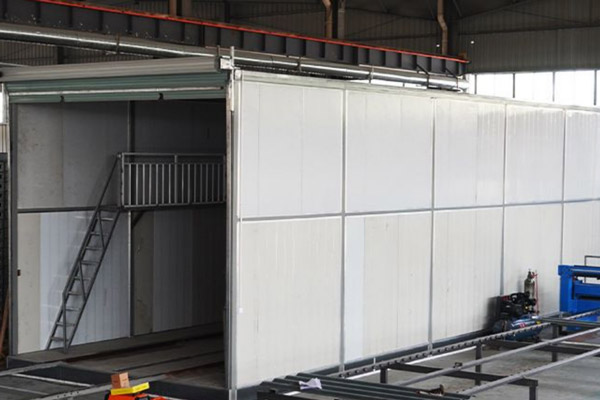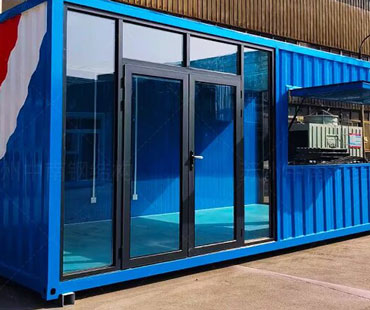In the contemporary world, containers have become synonymous with global trade, serving as the backbone of international logistics. The process of containerization has revolutionized how goods are transported, significantly impacting economies around the globe. This article delves into the fundamental role of containers in facilitating global trade, their influence on economic growth, and the challenges and opportunities presented by this transformative shipping method.
Containerization began in the 1950s when Malcom McLean, an American trucking magnate, introduced the concept of using standardized containers for shipping goods. This innovation allowed entire shipments to be loaded and unloaded quickly at ports, drastically reducing shipping times and costs. The introduction of the intermodal container, which can be transported by ship, truck, or train without unloading the cargo, further enhanced this system.
Today, containers come in various sizes and types, designed for different types of cargo, including dry goods, liquids, and even refrigerated products. The International Organization for Standardization (ISO) established standard sizes for containers, facilitating global commerce and making it easier for shipping lines to manage their fleets.
Impact on Global Trade
1. Cost Efficiency and Speed
One of the most significant advantages of containerization is its ability to reduce transportation costs. Containers enable the efficient stacking and stacking of goods, maximizing space on ships and reducing the number of trips required. According to the World Bank, container shipping costs have plummeted over the decades, from around $5,000 per container in the 1970s to as low as $1,000 today. This reduction in cost has made international trade accessible to smaller businesses and emerging economies, stimulating global commerce.
2. Facilitating Supply Chain Management
Containers have transformed supply chain management by allowing for just-in-time (JIT) inventory systems. Businesses can now synchronize their production schedules with shipping times, reducing the need for large inventories and minimizing storage costs. The ability to track containers in real-time through GPS and RFID technology enhances transparency and efficiency in the supply chain, allowing businesses to respond swiftly to market demands.
3. Promoting Economic Globalization
The advent of container shipping has significantly contributed to the globalization of trade. Countries can now import and export goods with unprecedented ease, leading to increased trade volumes and economic interdependence. Emerging economies, particularly in Asia and Africa, have benefited from access to global markets, allowing them to participate in the global economy and attract foreign investment.
4. Job Creation and Economic Development
The rise of container shipping has also created millions of jobs worldwide, from port workers to logistics and supply chain professionals. Ports have become critical hubs of economic activity, generating revenue for local economies and fostering infrastructure development. As trade volumes increase, the demand for skilled labor in shipping, logistics, and related industries has surged, contributing to overall economic development.

Despite its many benefits, containerization and global trade face several challenges:
1. Environmental Concerns
The shipping industry is a significant contributor to global greenhouse gas emissions. As container traffic continues to grow, so does the environmental impact. There is an urgent need for the industry to adopt greener practices, such as using cleaner fuels, improving energy efficiency, and investing in sustainable technologies.
2. Port Congestion
Many major ports around the world are struggling with congestion due to increased container traffic. Bottlenecks at ports can lead to delays, increased shipping costs, and disruptions in supply chains. Efficient port management and investment in infrastructure are essential to address these challenges.
3. Security Risks
The global nature of container shipping presents security challenges, including the risk of theft, smuggling, and terrorism. Ensuring the safety and security of cargo is critical for maintaining trust in global trade. Enhanced screening processes, advanced tracking systems, and international cooperation are necessary to mitigate these risks.
4. Technological Disruption
The rise of automation and digitalization in shipping and logistics poses both opportunities and challenges. While new technologies can improve efficiency and reduce costs, they may also lead to job displacement and require significant investment in workforce retraining.
The future of containerization looks promising, driven by technological advancements and evolving market demands. Innovations such as blockchain technology for tracking shipments, autonomous ships, and AI-driven logistics are poised to transform the industry further. Furthermore, the increasing emphasis on sustainability will lead to the adoption of more eco-friendly practices in shipping.
As global trade continues to evolve, containers will remain a vital driver of economic growth. By addressing the challenges facing the industry and leveraging new opportunities, stakeholders can ensure that containerization continues to facilitate international commerce and contribute to global economic prosperity.
Containers have undeniably become the driving force behind global trade, enabling countries to connect and collaborate like never before. Their impact on cost efficiency, supply chain management, and economic development is profound. However, as the industry faces challenges related to the environment, security, and technological disruption, it is crucial for stakeholders—governments, businesses, and international organizations—to work collaboratively to address these issues.


